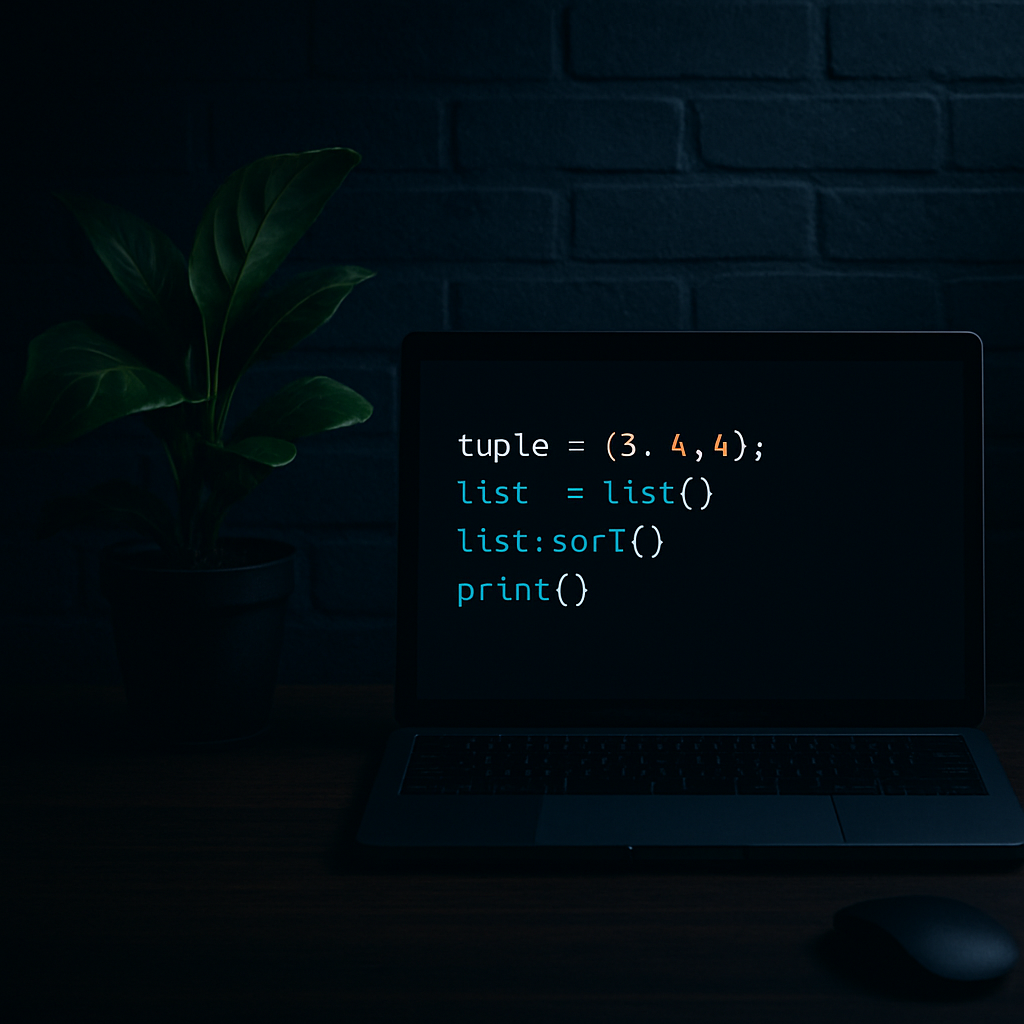Sort Tuples Easily: Convert, Sort, and Revert in Python
Discover a quick and efficient method to sort tuples in Python by converting them to lists, sorting, and reverting them back.
Understanding Tuples and Their Limitations
Tuples in Python are a core data structure that many programmers encounter early in their coding journey. Unlike lists, tuples are immutable, meaning once they are created, their elements cannot be changed. This immutability is a powerful feature that ensures tuples remain constant and avoid the pitfalls of unintended modifications.
However, this feature also means that sorting a tuple directly is not feasible. If you’ve ever found yourself needing to sort a tuple, you might have been initially stumped. Fortunately, there’s a straightforward workaround that involves temporary conversion of the tuple into a form that is mutable.
The Simple Trick: Converting Tuples to Lists
To sort a tuple, the first step is conversion. You can easily convert a tuple into a list using Python’s built-in list() function. This conversion provides the flexibility needed for sorting because lists, unlike tuples, are mutable.
Here’s a step-by-step guide:
- Convert the Tuple to a List: This is done using the
list()function. For example,my_list = list(my_tuple). - Sort the List: Utilize the
sort()method that lists provide to sort the elements. Executemy_list.sort()to arrange the list in ascending order. - Convert the List Back to a Tuple: Finally, revert the sorted list back into a tuple using the
tuple()function, like so:my_tuple = tuple(my_list).
Efficiency and Practical Applications
This technique of sorting by conversion is not only efficient but also practical in various coding scenarios. It takes advantage of the list’s dynamic nature while still delivering a sorted tuple result. This method is especially useful when handling collections of data where immutability and order are both desired.
Many sources suggest that for small to moderately large datasets, this method performs adequately and maintains readability, an essential aspect of clean coding. As your Python skills grow, incorporating such handy techniques can streamline your coding process and open up new possibilities.
Try It for Yourself
Whether you’re a beginner or a seasoned programmer, refining your skills by learning small, potent tricks like this can greatly enhance your coding toolkit. Sorting a tuple by conversion is just one of many strategies to boost your efficiency with Python.
So, give it a try today! Convert a tuple to a list, sort it, and revert it. It’s a simple yet powerful way to polish your programming acumen. Embrace this step toward mastering Python, one minute at a time.

Leave a Reply